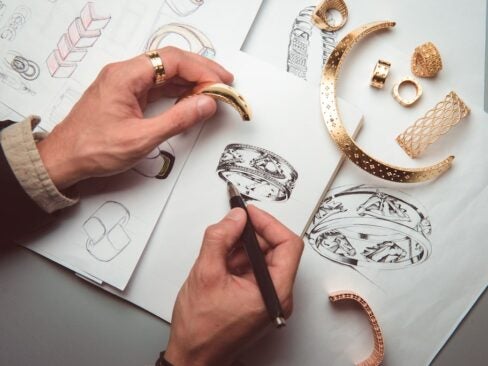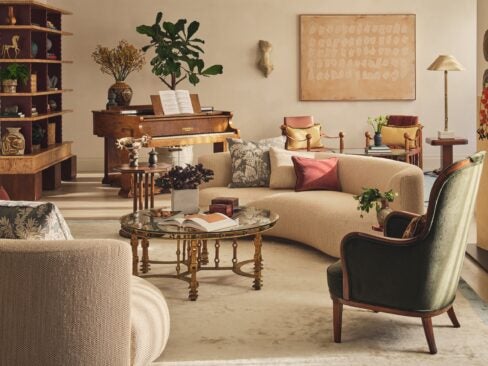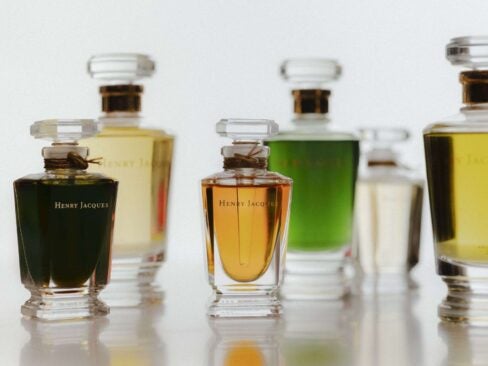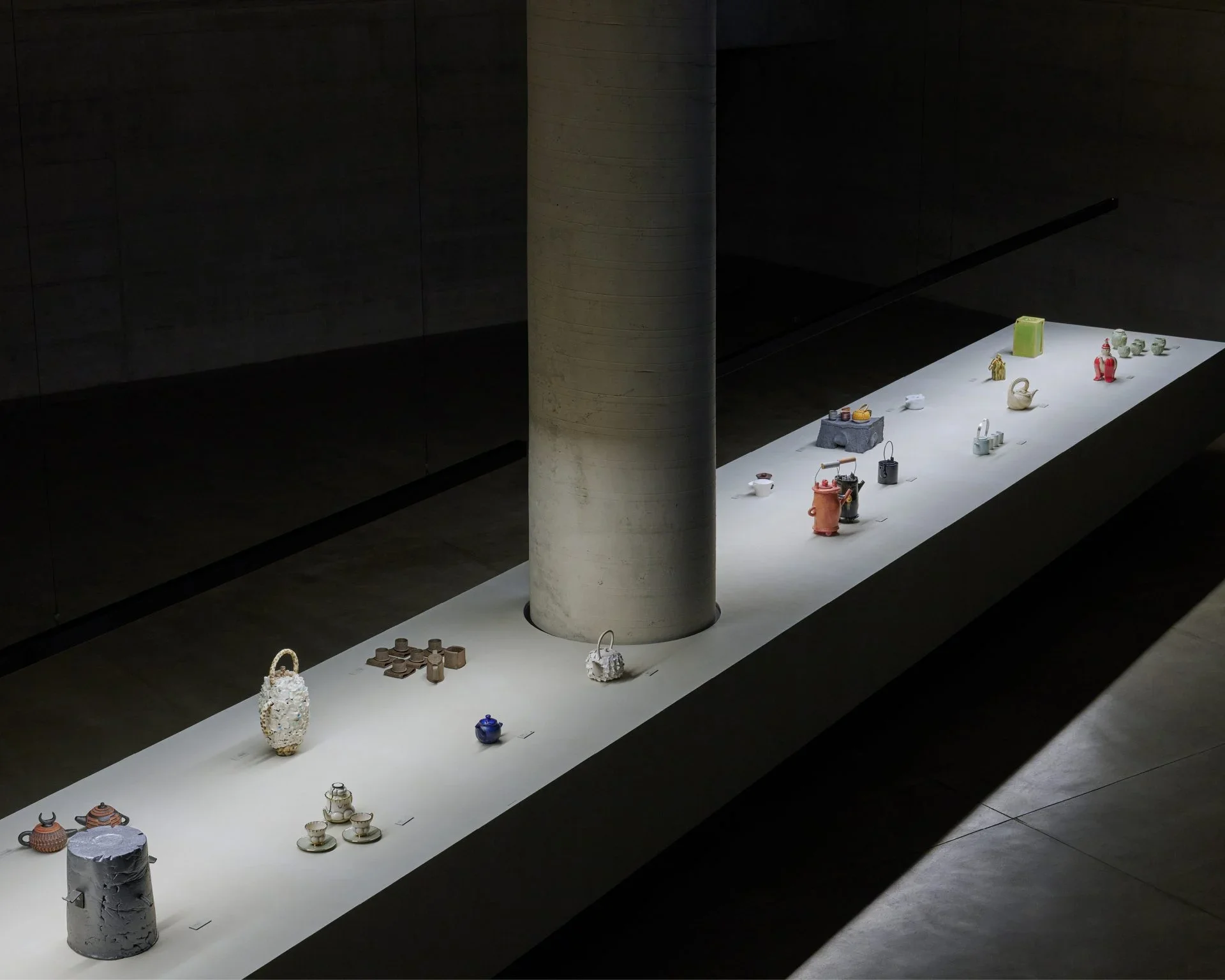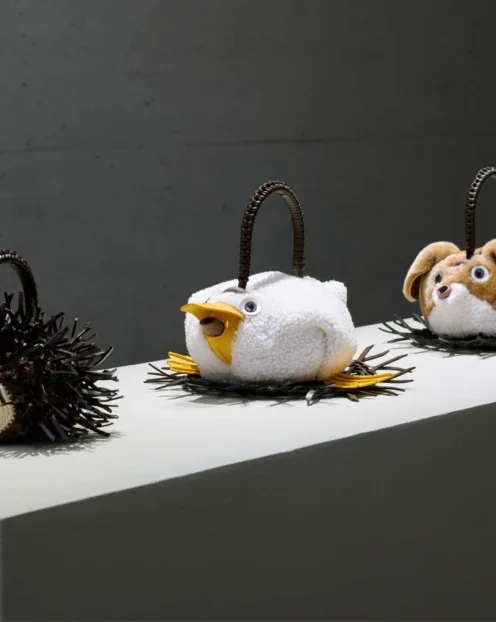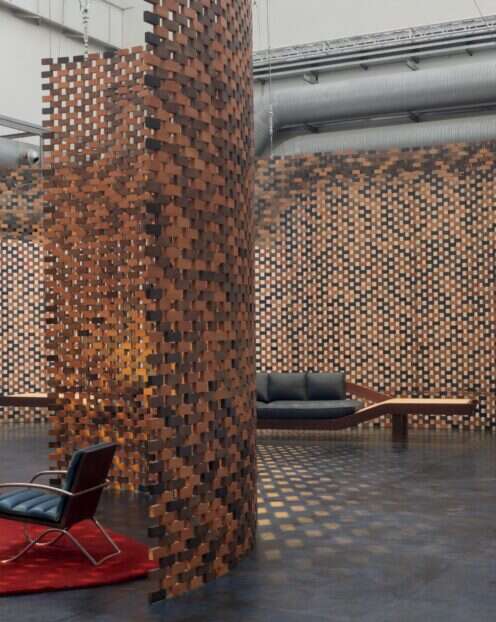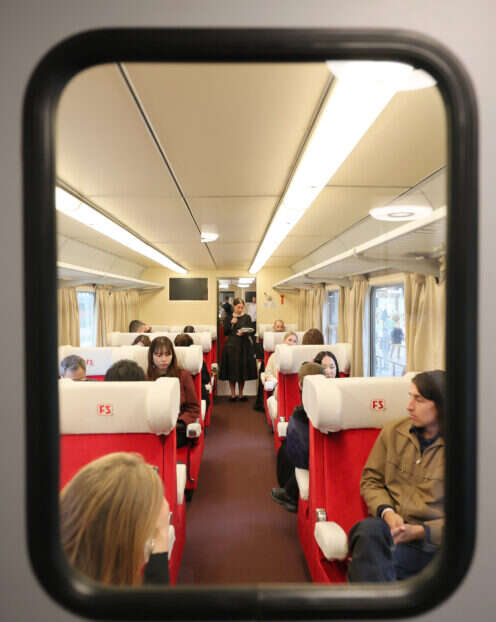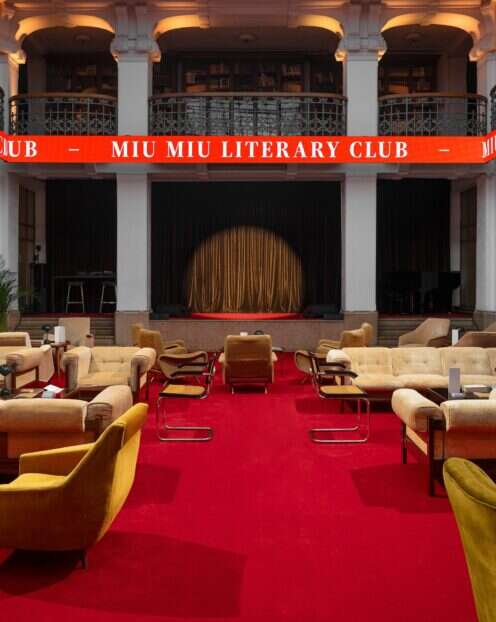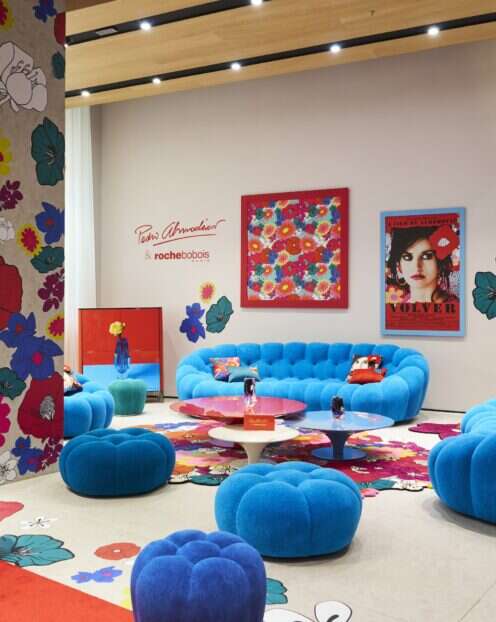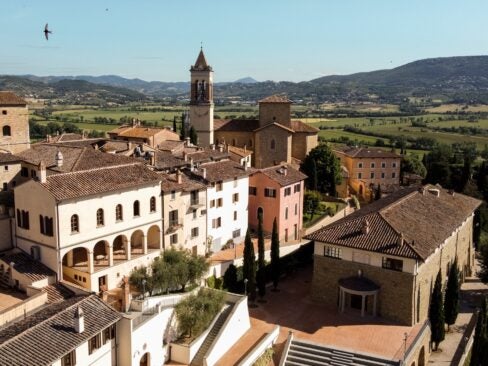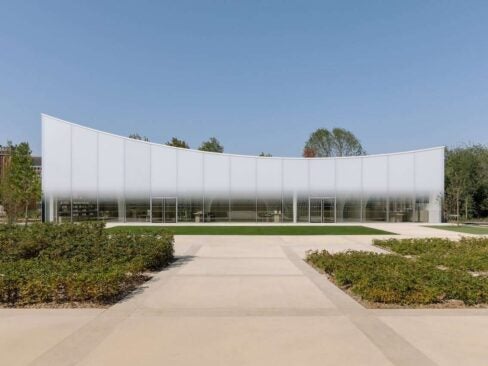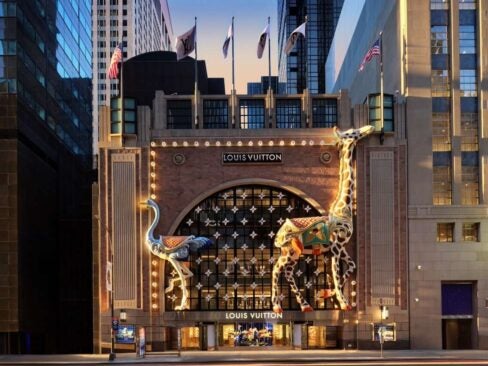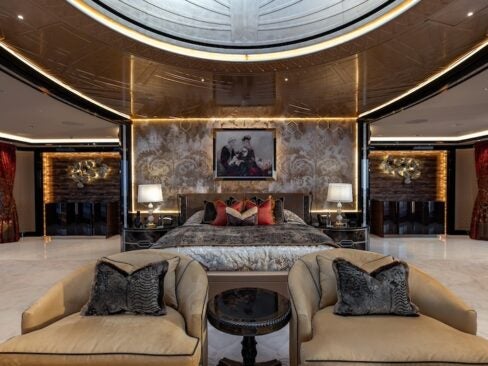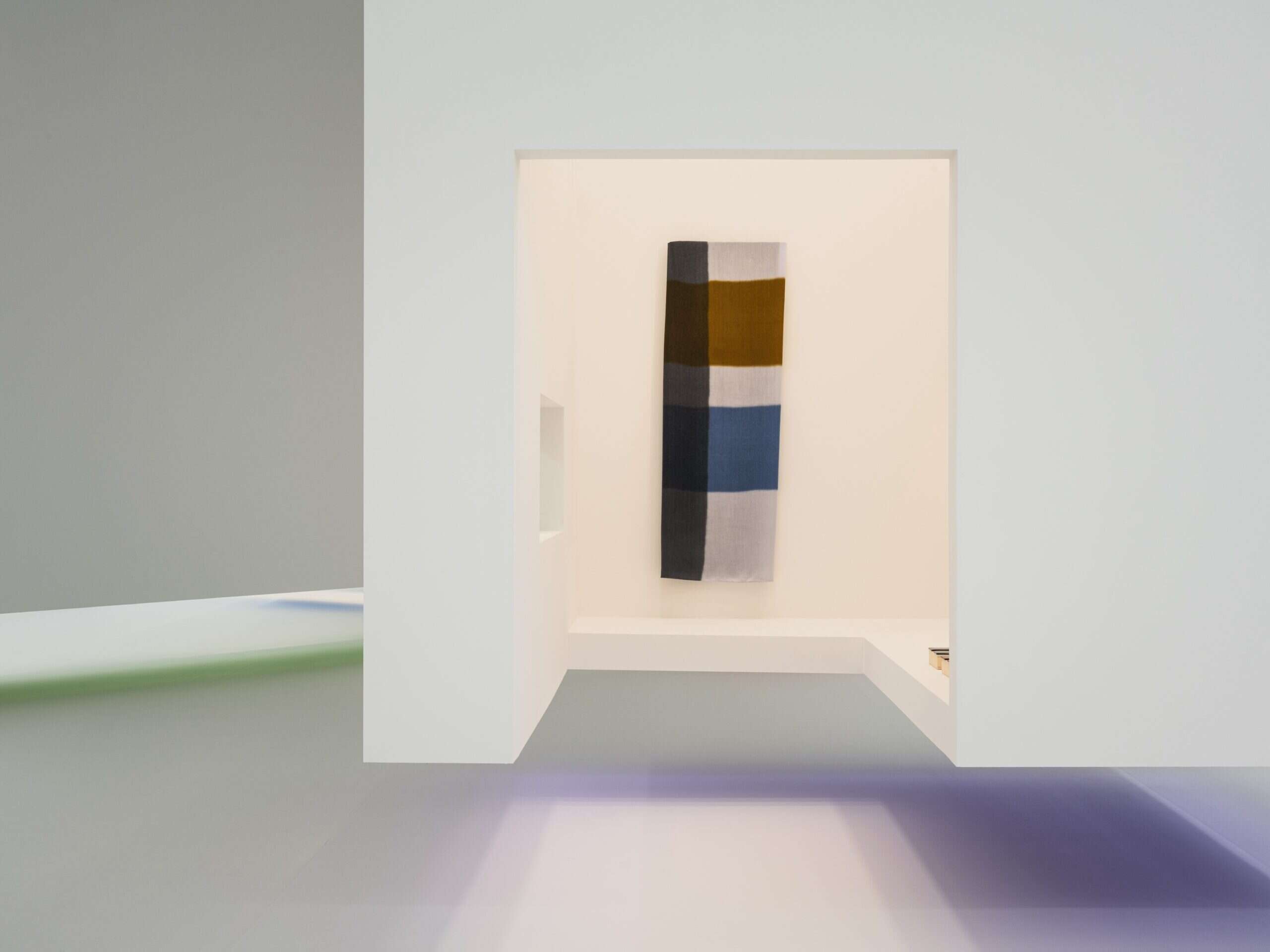
Now, I don’t believe in fortune tellers, and I certainly don’t believe in time travel – but I do think there’s some truth in this: if you want a glimpse of what your home might look like five or 10 years from now, book a ticket to Milan Design Week in April.
This year marked Elite Traveler’s very first visit to Milan Design Week – and again, while we don’t believe in predicting the future, let’s just say we’ve already saved the dates for next year. From April 15 through 21, the city pulsed with creativity, stretching from Brera to Baranzate, with Salone del Mobile anchoring the action as the world’s most influential furniture fair.
From heritage revivals to futuristic concepts, playful palettes to museum-worthy installations, Milan didn’t just showcase trends – it set the stage for what’s to come.
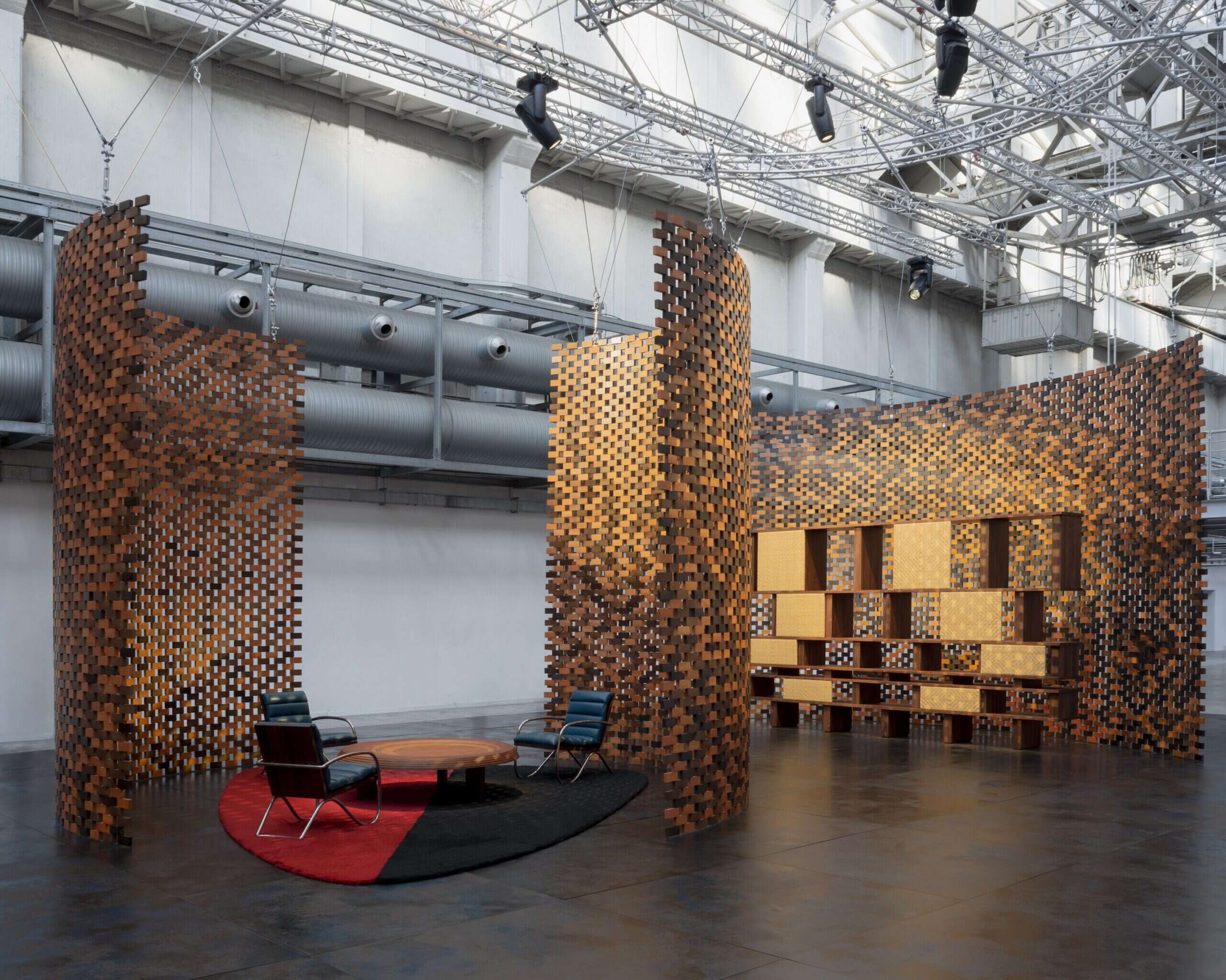
Hermès
In the cavernous, 1940s former swimming pool of La Pelota, Hermès staged a scene straight out of a Stanley Kubrick daydream. Suspended mid-air like dream capsules, a series of glowing, oversized pods framed the brand’s latest homeware collection in theatrical style, with soft-focus halos of coloured light dissolving the harshness of the concrete space. These mysterious floating boxes weren’t just dramatic set pieces; they represent the soul of the collection, a poetic exploration of the “quest to understand the object” – and what a journey it is.
Mouth-blown glass vases came wrapped in snug leather jackets, their criss-cross patterns playfully referencing tartan horse blankets, a stylish wink to Hermès’ equestrian heritage. Irish designer Nigel Peake added a touch of whimsy with a 33-piece porcelain dinner service, each piece delicately hand-painted in watercolour. The entire set was laid out inside one pod like it was waiting for an enchanted dinner party to begin. Elsewhere, a cashmere throw by Paris-based artist Amer Musa brought a sense of play, featuring appliqué polka dots stitched into a grid inspired by childhood games. The result? A tactile delight that feels equal parts luxury and nostalgia.
Loewe
In one of his final acts as creative director, Jonathan Anderson offered something rare amid the chaos of Design Week: a moment of pause. At the serene Palazzo Citterio, guests were invited to slow down, sip some tea, and reflect. At the simply titled exhibition Loewe Teapots, 25 artists, designers, and architects from around the world were brought together to reimagine the humble teapot as a sculptural symbol of tradition, ritual, and global culture.
Some took the prompt and ran with it. Spanish designer Patricia Urquiola’s Ardilla is a violet-hued, hand-sculpted piece that feels more like an architectural model than a functional pot. German artist Rosemarie Trockel offered a darker meditation with her massive Communal Teapot – a brooding, monumental form that invites contemplation on the shared act of tea drinking as both comfort and ceremony.
Loewe didn’t stop at high-concept. In true Jonathan Anderson fashion, there was also a playful twist: a limited-edition run of zoomorphic tea cozies, hand-knitted and crocheted into creatures like hedgehogs, owls, frogs, pandas, and wide-eyed pigs. Equal parts charming and eccentric, they channel domestic ritual with a wink of childhood nostalgia – and just enough weirdness to make you smile.
Saint Laurent
In a tribute to 20th-century design pioneer Charlotte Perriand, Saint Laurent unveiled four never-before-seen furniture pieces. Reconstructed from sketches and prototypes, the works – originally conceived between 1943 and 1967 – were brought to life for the first time under the creative direction of Anthony Vaccarello, in collaboration with the Perriand archive.
The collaboration is more than a design revival; it nods to the house’s own legacy. Yves Saint Laurent himself admired and collected Perriand’s work, making this a fitting dialogue across eras.
The centrepiece is La Banquette de la Résidence de l’Ambassadeur du Japon à Paris (1967), a sculptural five-seat sofa originally designed for the Japanese ambassador’s Paris residence. It’s an embodiment of Perriand’s East-meets-West philosophy – functional, refined, quietly radical.
Also on view – and available in ultra-limited editions – are La Bibliothèque Rio de Janeiro (1962), a rosewood bookcase with sliding cane doors, inspired by Brazilian shading techniques; and Le Fauteuil Visiteur Indochine (1943), a once-lost armchair from her time in Vietnam, now reimagined with a tubular steel frame, rosewood seat, and traditional Thai cushion. The fourth, La Table Mille-Feuilles (1963), once thought too complex to fabricate, has finally been realised – ten stacked layers of rosewood and cherrywood forming a tabletop of concentric circles. A masterstroke of precision and patience.
Fendi Casa
Skipping the spectacle of a grand exhibition, Fendi Casa opted instead for something more intimate – but no less impactful. British designer Lewis Kemmenoe returned to transform the brand’s boutique on Piazza della Scala into a study in duality, taking over both thematically and visually.
The space is almost split in two: on one side, a glamorous display of 1990s high-shine metallics, sleek lines, and a palette of inky greys and blacks. On the other, a softer mood emerges that feels more akin to the aesthetics of the 1970s, with pale wood, bamboo, and curved forms in an earthy, understated palette. It’s a yin-yang of bold precision and quiet elegance: like two sides of the same impeccably crafted coin.
Among the new pieces making their debut were the Cover sofa – a plush and versatile design meant to be “dressed up or down” – and Stefano Gallizioli’s Twist chair, with sinuous armrests that curl like ribbons around a leather-upholstered wooden frame. Rounding out the collection was the Later modular sofa by Ceriani Szostak, inspired by Fendi’s iconic rationalist HQ in Rome.
Prada
This year, Prada and Miu Miu swapped the showroom for the salon, opting for intellect over installation. Rather than debuting a product line, Prada used Milan Design Week to host the fourth edition of Prada Frames, a curated symposium exploring the intersection of design, culture, and the environment.
Titled In Transit, this year’s theme was appropriately staged inside Milano Centrale, one of Italy’s great monuments to movement. The event unfolded within the Padiglione Reale, the station’s former royal waiting room – what was once reserved for kings and dignitaries was, for this week, filled with curious minds. Curated by design duo Formafantasma, the talks brought together voices from across disciplines to probe the ways architecture, engineering, and planning influence the way we live – and move – through the world.
Elite Traveler attended a session where astrophysicist Ersilia Vaudo of the European Space Agency and writer Nick Hunt led a conversation on how infrastructure shapes our exploration of both Earth and beyond. Hunt, known for retracing ancient wind routes, reflected on how Europe’s named winds have long shaped not just weather patterns, but borders, psyches, and social orders. After the discussion, guests were invited to board the Arlecchino – a 1950s gem of Italian rail design, originally created by Gio Ponti and Giulio Minoletti, now beautifully restored by the Fondazione FS Italiane.
Miu Miu
While Prada offered a cerebral pause at the station, Miu Miu invited guests to take a seat, crack open a book, and step into a more intimate kind of journey. For its second edition, the brand reopened its Miu Miu Literary Club at the Circolo Filologico Milanese. This year’s theme, A Woman’s Education, delved into the tangled territories of girlhood, love, and sex education through the literary lenses of Simone de Beauvoir and Fumiko Enchi.
The event opened with the session The Power of Girlhood, which centred on de Beauvoir’s once-private novella The Inseparables – a tender portrait of adolescent friendship and feminine awakening. A stellar lineup of voices took part in a lively panel moderated by writer and curator Lou Stoppard. Speakers included French-American writer and translator Lauren Elkin, Booker Prize-winning novelist Geetanjali Shree, and Italian author Veronica Raimo, creating a salon-like atmosphere that felt as much like a shared diary as a panel discussion.
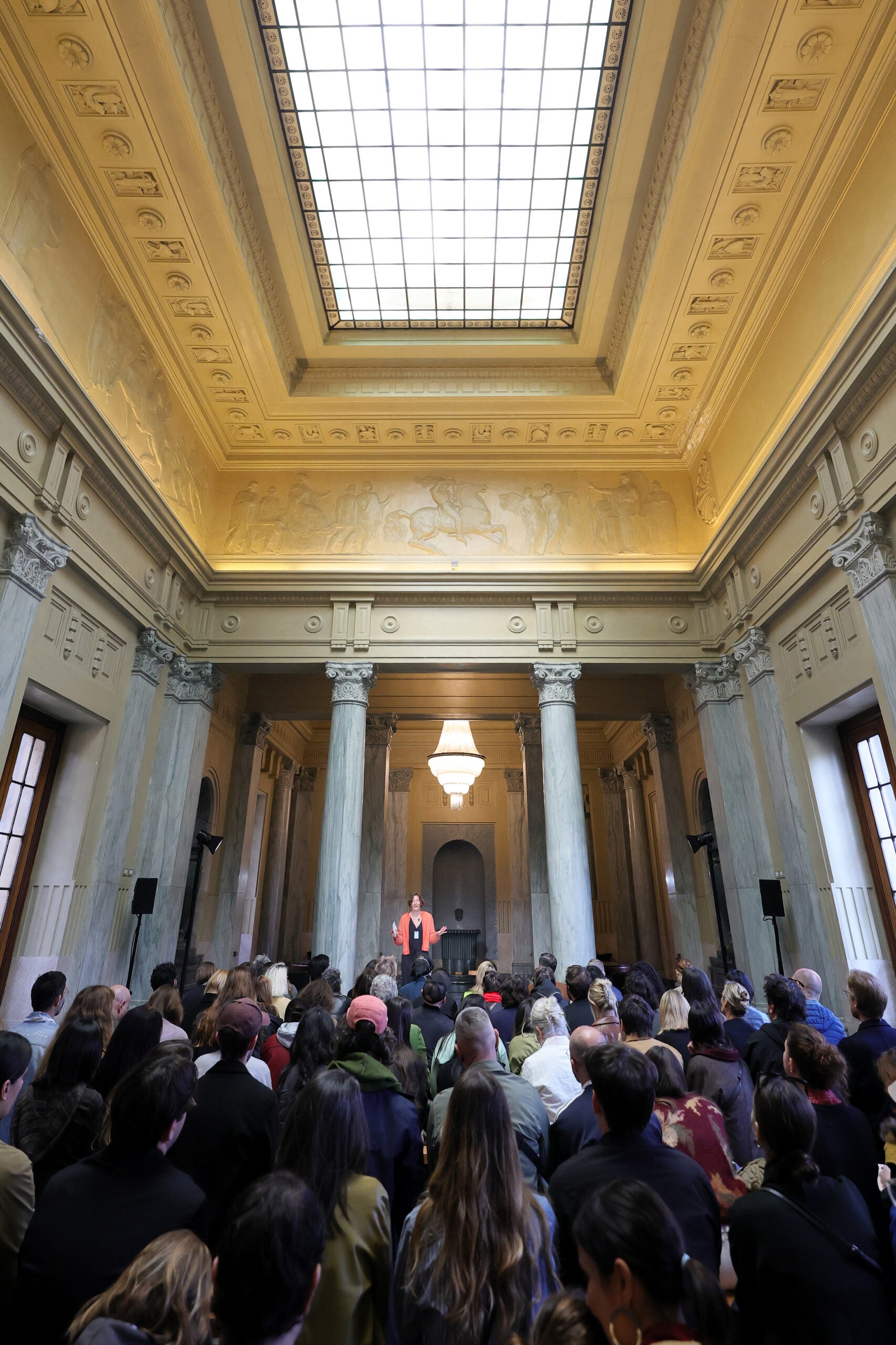
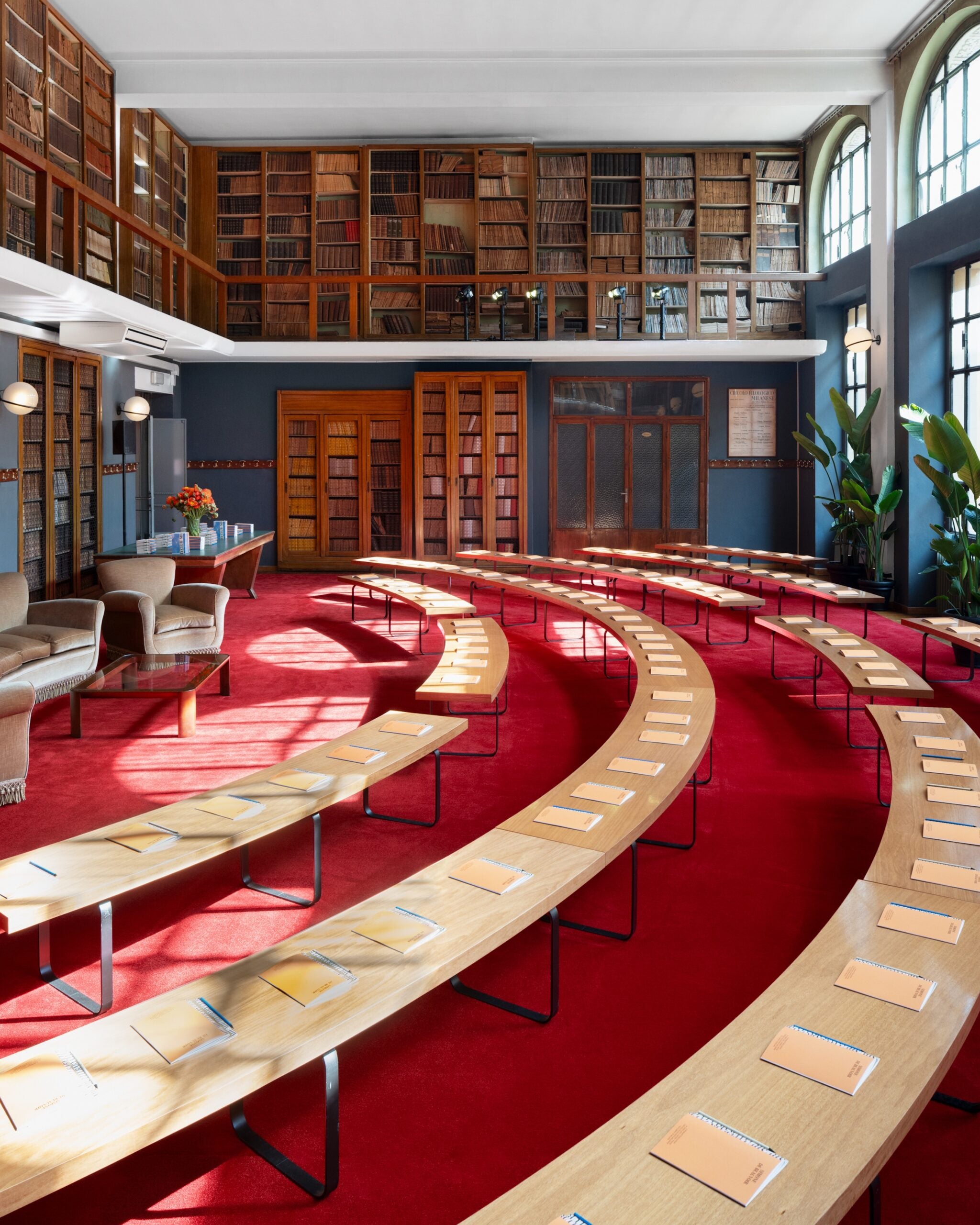
Swapping the library for the silver screen, French furniture house Roche Bobois teamed up with legendary filmmaker Pedro Almodóvar for a limited-edition collaboration. Known for his bold use of color and emotional storytelling, Almodóvar brings his unmistakable visual universe to the world of design.
It’s a natural pairing: both Roche Bobois and Almodóvar treat color as a language of its own. And at the heart of the collab is a special reissue of the iconic Lounge modular sofa by Hans Hopfer, now reimagined with vibrant imagery from Almodóvar’s most beloved films – Volver, Talk to Her, Women on the Verge of a Nervous Breakdown, and more. Each piece is numbered, signed, and limited to just 50 editions.
Following a similarly cinematic showcase at its French showroom weeks earlier, furniture maker Ligne Roset presented its 2025 collection at Mohd Milano. Rather than unveiling something entirely new, the brand offered a reimagined take on the familiar, spotlighting refreshed editions of the Sandra settee and Kashima armchair. With updated colors and sculptural appeal, the pieces proved that timeless design doesn’t need reinventing – just the right frame.
While the setting at Edra’s Palazzo Durini certainly felt like cinema, the Italian brand looked not to the screen, but to the raw beauty of nature for inspiration. The result was a showcase that, quite literally, glowed with materials drawn from the mineral world.
The new Gems collection dazzles with nine richly textured fabrics inspired by precious stones, from moonstone to malachite, tiger’s eye to black tourmaline. Alongside – or more accurately outside – Every Stone debuted as a durable material with the look, but certainly not feel, of marble. Rendered in shades like Imperial Red, Alpine Green and Aquamarine, it’s built to withstand the elements while echoing the elegance of indoor stonework.
Florals for spring? Groundbreaking. But for Artemest’s 10th anniversary, it unveils its third edition of L’Appartamento, the theme blossomed in ways both unexpected and sublime. Set inside a 19th-century apartment in Palazzo Donizetti, six international design studios transformed each room into a love letter to Italian craftsmanship, with petals rendered not just in silk and paint, but also in marble, glass, and metal.
Soft pastel-colored textiles met cascading floral sculptures, hand-painted citrus-tree wallpaper from Fabscarte, and Murano chandeliers. Even travertine – like Brigette Romanek’s sculptural dining table – took on a tender touch. From the delicate to the decadent, each space felt like a living garden of design. The grand finale? A vintage Porsche 911 parked in the foyer, overflowing with pink blooms – a wink to the joy, drama and flair of Milan Design Week at full tilt.
Celebrating another huge anniversary in the city was British lighting brand Anglepoise, which made its long-awaited return to Milan Design Week. After a five-year hiatus, Anglepoise returned to Milan Design Week to mark 90 years of its iconic 1227 desk lamp. Honouring its engineering roots with a limited-edition polished aluminium reissue, the brand also debuted vibrant new colourways of the 90 Mini Mini. Playful yet precise, the installation was a tribute to Anglepoise’s enduring knack for lighting up both rooms and imaginations.


